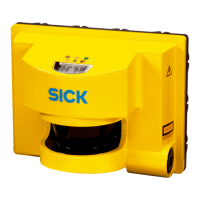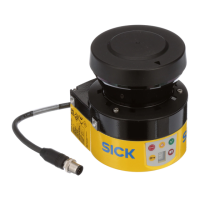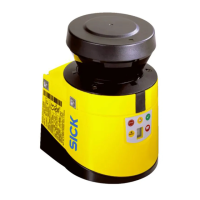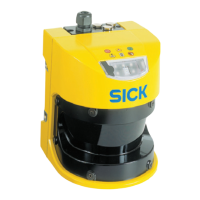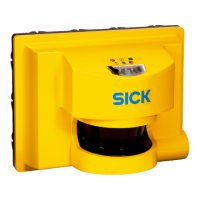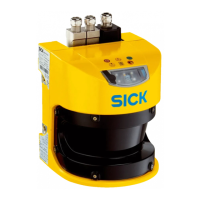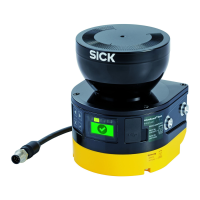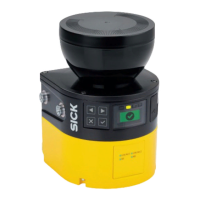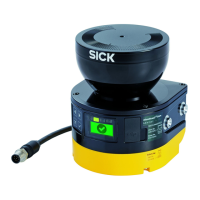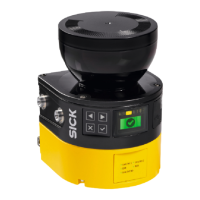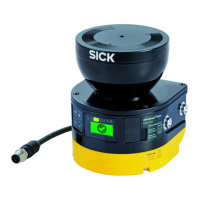Chapter 5 Operating instructions
S300
64 © SICK AG • Industrial Safety Systems • Germany • All rights reserved 8010948/YY96/2016-02-17
Subject to change without notice
Mounting
How to calculate the minimum distance S (see EN ISO 13855):
First, calculate S using the following formula:
S
= 2000 × (T
M
+
T
S
)
+ 8 × (d – 14) [mm]
Where …
S = Minimum distance [mm]
T
M
= Stopping/run-down time of the machine or system
T
S
= Response time of the S300
d = Resolution of the S300 [mm]
The reach/approach speed is already included in the formula.
If the result S is 500 mm, then use the determined value as the minimum distance.
If the result S is > 500 mm, you may be able to reduce the minimum distance using the
following calculation:
S = 1600 × (T
M
+ T
S
) + 8 × (d – 14) [mm]
If the new value S is > 500 mm, then use the newly calculated value as the minimum
distance.
If the new value S is 500 mm, then use 500 mm as the minimum distance.
Response time T
S
of the S300
The response time T
S
of the S300 depends on …
the basic response time of the S300,
the multiple sampling set,
the transmission speed to external OSSDs via EFI.
See section 12.2 “OSSD response times” on page 117.
5.4 Mobile applications
If the dangerous state is produced by a vehicle (e.g. AGV or fork lift), the hazardous area
that is produced by the movement of the vehicle is protected by the S300.
The S300 may only be used to protect vehicles powered by electric motor.
In the following calculations only take into account the velocity of the vehicle, not the
speed of the person walking. This is based on the assumption that the person will
recognize the danger and stand still.
For vehicle protection, observe EN 1525 “Safety of industrial trucks. Driverless trucks
and their systems”.
If the application is to protect vehicles from collisions, then you may need to use
different assumptions.
For a horizontally mounted mobile application, determine:
protective field length
protective field width
height of the scan plane
restart behavior
methods of preventing unprotected areas
N
ote
Notes
